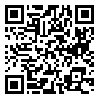BibTeX | RIS | EndNote | Medlars | ProCite | Reference Manager | RefWorks
Send citation to:
URL: http://sjsph.tums.ac.ir/article-1-77-en.html
Background and Aim: Non-communicable diseases (NCD), also referred to as chronic or lifestyle-related diseases, are a serious health problem in most countries today. The World Health Organization (WHO) has discussed this issue and presented solutions for it in its annual meetings. This paper reviews and reports on the action taken by the Medical University of Isfahan (MUI) through its Non-communicable Disease Control Program based on the WHO "Prevention and control of non-communicable diseases: implementation of the global strategy", which is a comprehensive program for controlling non-communicable diseases.
Materials and Methods: In this descriptive-analytical study, the activities of 21 Non-communicable Disease Units in Isfahan Province affiliated to MUI in its Non-communicable Disease Surveillance System aiming at combating non-communicable diseases were assessed using a self-assessment technique and the relevant documents reviewed. All the NCD officers (n=30) were enrolled in the study. A validated researcher-designed questionnaire containing items related to six areas based on the WHO "Prevention and control of non communicable diseases: implementation of the global strategy", the reliability of which had been confirmed, was used. The data were analyzed using the SPSS software, the statistical tests being the t-test.
Results: The general self-assessment score of MUI in the activities related to non-communicable disease surveillance and control program was 1.44 0.59 (out of 4). From among the six strategies studied, the "increasing public awareness about non-communicable diseases" strategy and the "improving collaboration and participation in prevention and control of non-communicable diseases" strategy achieved the highest and the lowest score, respectively. Documentation was weak (less than 50%), and there was no significant difference between the scores of actions documented and those not documented (P = 0.1).
Conclusion: Isfahan Medical University is one of the leading universities in Iran. It has taken important valuable measures in the area of non-communicable disease control and surveillance programs. However, our findings show that there are several weaknesses in these programs. Not paying sufficient attention to documentation, for example, is a serious weakness, since documentation plays an important role in the performance and excellence of an organization, guaranteeing its success.
Received: 2010/07/24 | Accepted: 2010/10/19 | Published: 2013/08/9
| Rights and permissions | |
 |
This work is licensed under a Creative Commons Attribution-NonCommercial 4.0 International License. |





